


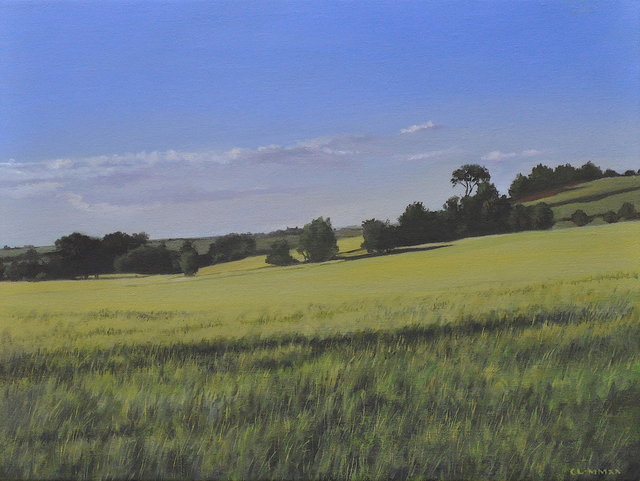
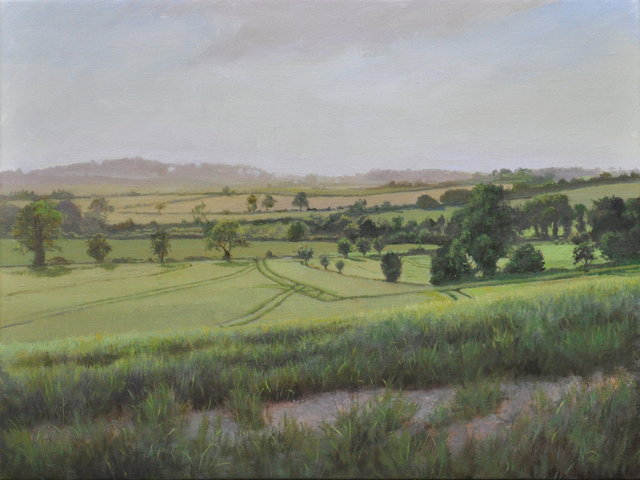
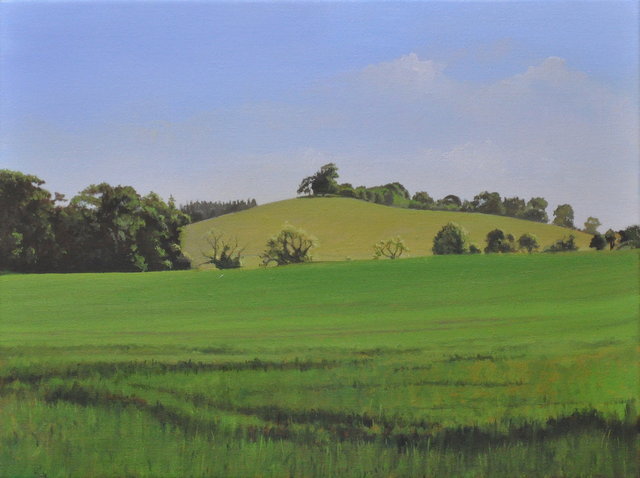
I spent the first “lockdown” painting a cycle of paintings of The Royal Naval Hospital, Greenwich as Hawksmoor might have completed it and two paintings of Le Notre’s design for a formal garden to the south of the Queen’s House.
During the “second lockdown” I am painting smaller paintings that reflect the situation of the “lockdown” more directly. (The small size is significant as my studio is packed with unsold paintings – some quite large!) Paintings of plants in my garden, a sourdough loaf of bread made by my neighbour, and small paintings of Charlton, the countryside where I have gone to take my allotted daily period of exercise make up this new Lockdown’s work so far.
I have walked in Charlton for 45 years this coming summer since we first moved to Hitchin in the summer of 1976. It has always been a source of great pleasure, and I painted my first painting of it, The Barley Field, in 1979. It has remained remarkably untouched until now, its closest scrape with destruction coming in the first decade of the present century when it succeeded in fighting off a development linking Stevenage to Luton in a continuous ribbon of suburban housing.
Hitchin’s most famous son, F. L. Griggs, (most famous son in my mind at least!) described the stretch of landscape running southwest from Hitchin, through Charlton and Preston, as “as fair a prospect as can be found in all of England.” And again,“It was a place for loitering and meditation, or for the enjoyment of the views it afforded whenever it rose from its hollow snugness into prominence on a hillside.”
This beautiful countryside has attracted many walkers taking their allotted exercise during “lockdown” and with extremely wet weather has led to some very boggy walks as the footpaths get churned up by scores of walkers, but its beauty remains and I am glad it is being enjoyed by more people who I hope will ensure it remains intact in the future. It is an incredibly timeless place and I can sense FL Griggs’s presence there.
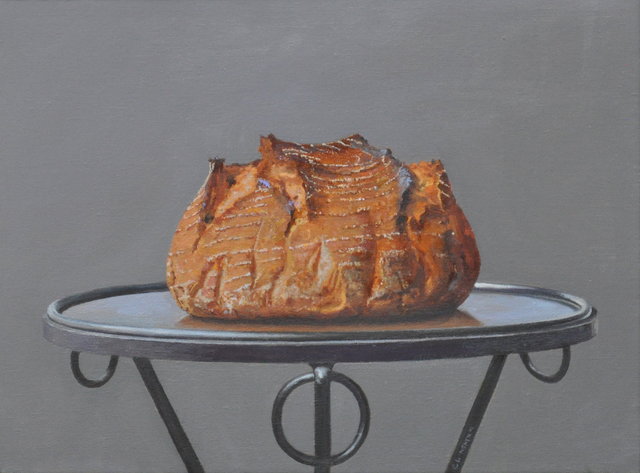
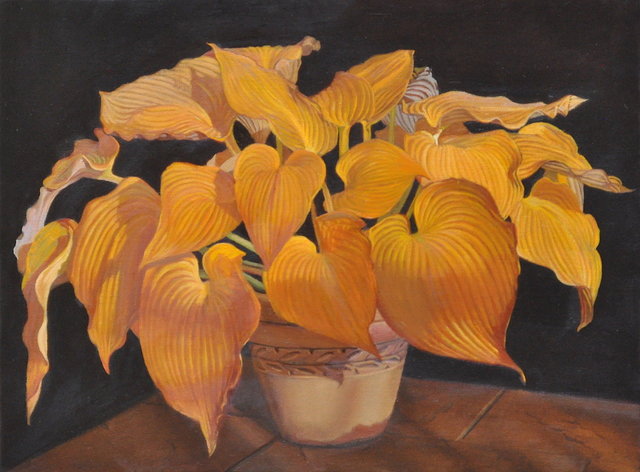
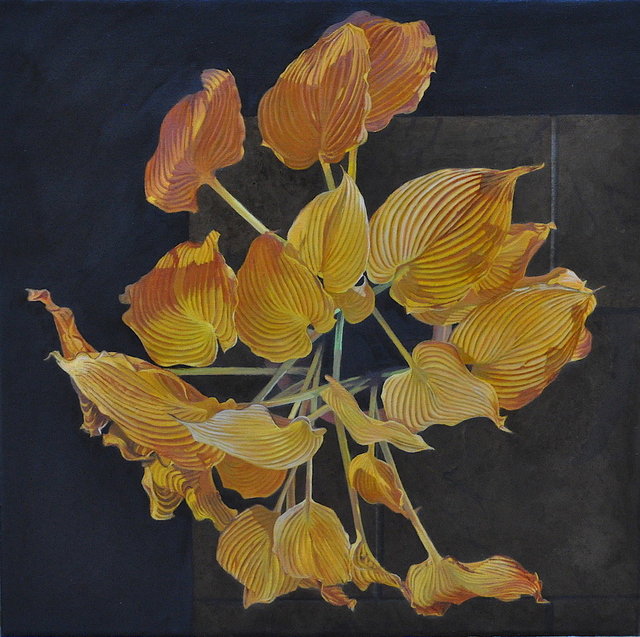
I was given this beautiful loaf of sourdough bread by my neighbour, Katrin, and it occurred to me that this loaf in a way said so much about how life and time had changed for many people during the pandemic and lockdown. People reacted to the isolation by finding ways of expressing themselves which they had no time to consider previously. I felt this loaf of bread in its simple and rustic beauty symbolized how many people felt and how life had slowed to a different pace. It seemed significant that something so small should contain a larger message.
Katrin confirms that view:
“Baking sourdough is the perfect lockdown activity, I am really enjoying the process. I don’t think I would have ever started baking bread without lockdown, as it requires time, and being at home so to fold the dough every few hours throughout the course of the day. I used to wonder about how to get the spirals, my first breads didn’t have them as I didn’t own a proofing basket when I started out. The lines consist of flour and semolina, which I use to dust the proofing basket, so the dough doesn’t glue itself to it when it proves in it over night. Without the dusting it would be impossible to get dough out loaf-shaped & in one piece when it is time to bake the next day. It is the rattan structure of the proofing basket that creates the concentric circles.”